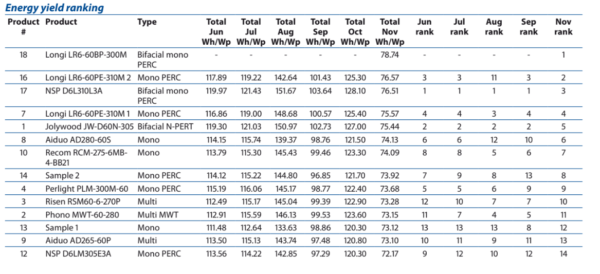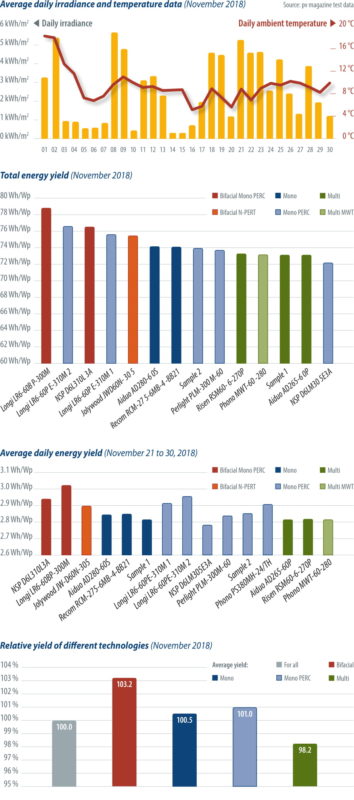We’re pleased to present pv magazine readers with the next batch of energy yield results of the outdoor test field at Xi’an, China, for the month of November 2018.
Monthly energy yield data from June to November is given in the table ‘Energy yield ranking’ (below). Bifacial and mono PERC products occupy the top five positions. The bifacial mono PERC module from Longi (LR6-60BP-300M) is included for November. Results don’t include the newly added mono PERC module from Phono (PS380MH-24/TH), installed in the test field on November 21, 2018. Results for this product will be presented next month.
To compare the newly installed Phono module’s performance with the others, the average daily yield was calculated from November 21 to 30 as shown in the third graph to the right.
The second table below shows data for the bifacial boost. The newly added Longi bifacial module was included in the analysis for November.
The graph to the bottom right shows the comparison between different technologies for the month of November. Bifacial, mono PERC, and mono modules are performing above the average energy yield level. The multicrystalline silicon PV modules are performing under the average energy yield level.
Notes on yield measurement:
The energy yield is given in Wh/Wp and calculated by dividing the energy produced by the module by the PMAX at STC of the module. This PMAX is the maximum STC power after a process of stabilization.
The results are grouped in categories, per module type. The bifacial boost depends on many parameters: the bifaciality factor, the installation geometry, the albedo of the ground, and also the sun angle and diffuse irradiance. The ground in this case is a plastic cover simulating green grass.



George Touloupas
This content is protected by copyright and may not be reused. If you want to cooperate with us and would like to reuse some of our content, please contact: editors@pv-magazine.com.